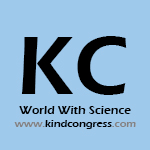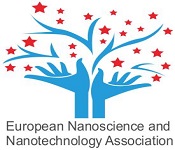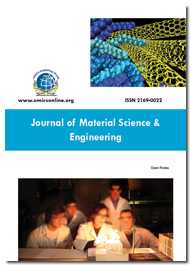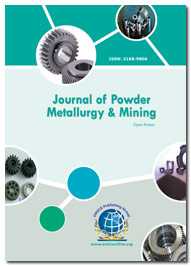Theme: Synthesis and application of functional materials to Science and Engineering
Materials Chemistry 2021
Chemistry Conferences welcome chemical professionals, researchers, professors, scientific communities, delegates, students, business professionals and executives from all over the world to attend the “19th International Conference and Exhibition on Materials Science and Chemistry” which includes prompt Keynote presentations, Oral talks, Poster presentations and Exhibitions.
Materials Chemistry 2021 which is the primordial chemistry conferences serves as a global platform to discuss and learn about Material Science, Material Engineering, pharmaceutical materials chemistry, biomimetic chemistry, chemical syntheses, characterization and processing of novel materials, Nano chemistry, applied materials chemistry, super conducting concepts, polymer chemistry, inorganic materials chemistry, organic materials chemistry, analytical materials chemistry, physical materials chemistry and other basic principles involved in Materials Chemistry.
In the light of this theme, the conference series aims to provide a forum for international researchers from various areas of chemistry, pharmacy, materials science and chemical engineering by providing a platform for critical analysis of new designing, and to share latest cutting-edge research findings and results about all aspects of Materials Chemistry. The current meeting of chemistry conferences will be a multinational gathering and present major areas such as surface enhancement, nanotechnology, polymer science and overall applications.
Materials Chemistry Conferences | Materials Conferences | Materials Science Conferences | Chemistry Conferences | Materials Science and Chemistry Conferences
Young Scientist Benefits:
• Our conferences provide best Platform for your research through oral presentations.
• Share the ideas with both eminent researchers and mentors.
• Young Scientist Award reorganization certificate and memento to the winners
• Young Scientists will get appropriate and timely information by this Forum.
• Platform for collaboration among young researchers for better development
• Award should motivate participants to strive to realize their full potential which could in turn be beneficial to the field as whole.
Track 1: Analytical Techniques and Instrumentation in Materials Chemistry
Various techniques related to the synthesis of materials to form useful chemical substances constitute the field of analytical study. Instrumental analysis mainly helps us to know the assessment of purity, their chemical composition, structure and function. Analysis of chemical compounds was done to produce results for “what chemicals are present, what are their characteristics and in what quantities are they present?” Basic methods rely on important factors like sample preparation, accuracy, precision and cleanliness. Calibration curves help in the calculation of proper quantities of sample used and also detect the synthesized novel compounds. Certain equipment like electron microscopes, spectrometers, diffractive instruments and so on was employed in the analytical process of a particular synthesis. Scanning electron microscope (SEM) helps in microstructural analysis, fault diagnosis, imaging and elemental analysis of solid materials. Microscopes mostly deal with the same kind of characteristics during the process of synthesis. Mass spectrometer will be majorly availed to detect the masses of individual species within a sample. X-ray diffraction (XRD) deals with the mineralogical analysis of solid materials for phase determination. Rutherford backscattering (RBS) is the major instrument used in the analysis related to the field of materials science and chemistry.
For more information, please visit Analytical Techniques and Instrumentation in Materials Chemistry | Materials Chemistry 2021
Track 2: Science and Technology of Advanced Materials
Two-dimensional (2D) materials have attracted much attention in the past decade. They have high specific surface area and also electronic engineering and properties that differ from their bulk counterparts due to the low dimensionality. Graphene is the best known and the most studied 2D material, but metal oxides and hydroxides (including clays), dichalcogenides, boron nitride (BN), and other materials that are one or several atoms thick are receiving increasing attention. They exhibit a combination of properties that cannot be provided by other materials. Many two-dimensional materials are synthesized by selective extraction process which is critically important when the bonds between the building blocks of the material are too strong (e.g., in carbides) to be broken mechanically in order to form Nano structures. These have a thickness of a few nanometres or less. Electrons are free to move in the two-dimensional plane, but their restricted motion in the third direction is governed by quantum mechanics. Magnetic topological insulator comprised of two-dimensional (2-D) materials has a potential of providing many interests and applications by manipulating the surfaces states like yielding quantum anomalous Hall effect giving rise to dissipation-less chiral edge current, giving axion electromagnetism and others. The chemistry of electrical, optical, thermal and mechanical properties varies in a peculiar style and these materials are applied widely in case of ambipolar electronics, transistors and so on.
For more information, please visit Science and Technology of Advanced Materials | Materials Chemistry 2021
Track 3: Materials Chemistry in Developing Areas
The essence of Materials Chemistry can be observed in various fields i.e., organic, inorganic, analytical, physical, organometallic, cosmetic, petro and forensic studies. Organic chemistry provides organic polymers for use in structures, films, fibres, coatings, and so on. It provides materials with complex functionality, a bridge between materials science and medicine and provides a sophisticated synthetic entry into nanomaterial. Inorganic chemistry deals with the structure, properties, and reactions of molecules that do not contain carbon, such as metals. It helps us to understand the behaviour and the characteristics of inorganic materials which can be altered, separated, or used in products, such as ceramics and superconductors. Analytical chemistry determines the structure, composition, and nature of substances, by identifying and analysing their various elements or compounds. It also gives idea about relationships and interactions between the parts of compounds. It has a wide range of applications, like food safety, Nano biopharmaceuticals, and pollution control. The analytical role of materials chemistry includes the materials science lab equipment associated with materials science experiments. The basic characteristics of how matter behaves on a molecular and atomic level and how chemical reactions occur are physical chemistry. Based on the inferences, new theories are developed, such as how complex structures are formed and develop potential uses for new materials correlating materials chemistry. Study of chemical compounds containing at least one bond between a carbon atom of an organic compound and a metal, including alkaline, alkaline earth, transition metal, and other cases is Organometallic chemistry. Materials that work physiologically within the skin or aid in protecting the skin from insult form Cosmetic chemistry. Petro chemistry deals with the transformation of crude oil (petroleum) and natural gas into useful products or raw materials. Forensic chemistry is the application of chemistry and its subfield, forensic toxicology, in a legal setting. Materials science and pharmaceutical chemistry are disciplines at the intersection of chemistry, especially synthetic organic chemistry, and pharmacology and various other biological specialties, where they are involved with design, electrochemical synthesis and development for market of pharmaceutical agents, or bio-active molecules (drugs). These chemical synthetic methods that make it possible to prepare a large number (tens to thousands or even millions) of compounds in a single process come under the concept of Combinatorial chemistry.
For more information, please visit Materials Chemistry in Developing Areas | Materials Chemistry 2021
Track 4: Chemical Engineering
Chemical engineering is all about changing raw materials into useful products such as clothes, food and drink, and energy. Chemical engineers focus on processes and products. They develop and design processes to create products. In addition to develop useful materials, modern chemical engineering is also concerned with pioneering valuable new materials and new methods such as nanotechnology, fuel cells and biomedical engineering.
For more information, please visit Chemical engineering | Materials Chemistry Conference | Materials Chemistry 2021
Track 5: Organic Materials Chemistry
Organic Materials Chemistry is a major area of research which leads to the development of advanced organic and polymeric materials by investigating into the process of synthesis, processing, control, characterization and establishment of the structural properties relationship among these materials. Functional properties were studied and related structural applications will be considered to play a key role. Nomenclature to the compounds was given based on the chemical structure and isomerism was observed in relation to the radical displacement of atoms within the structures. Structural chemistry involves the determination of structure of compounds using various instrumental techniques and the derivation of desired results by having a detailed study of the conclusions drawn during the process of analysis. Metal-organic frameworks (MOFs) are materials in which metal-to-organic ligand interactions yield porous coordination networks with record-setting surface areas surpassing activated carbons and zeolites. De-localization of orbitals within the complex substances form conjugated systems of materials which lead to the derivation of chromophores used in synthetic processes. Diamond and carbon materials are widely used in the applications of organic synthesis from novel materials.
For more information, please visit Organic Materials Chemistry | Materials Chemistry 2021
Track 6: Tissue Engineering
Tissue engineering is the use of a combination of cells, engineering, and materials methods, and suitable biochemical and physicochemical factors to improve or replace biological tissues. Tissue engineering evolved from the field of biomaterials development and refers to the practice of combining scaffolds, cells, and biologically active molecules into functional tissues. Nano-composites are used as three-dimensional Nano-fibril structures called scaffolds that function as biological media to support cell proliferation and differentiation in regenerative medicine. In the near future, 3D tissue-engineered models are expected to become useful tools in the preliminary testing and screening of drugs and therapies and in the investigation of the molecular mechanisms underpinning disease onset and progression.
For more information, please visit: Tissue Engineering | Materials Chemistry 2021
Track 7: Inorganic Materials Chemistry
Inorganic Materials Chemistry includes the study of elements with either metallic or non-metallic properties. Most of the elements are metallic for example alkali metals, alkaline earth metals, transition metals and so on. The category of non-metallic elements mainly contains elements which are gaseous in nature like hydrogen, oxygen and so on including noble gases. These all were segregated to produce new inorganic compounds based on the particular process of synthesis. Inorganic nanotubes have a composition of metal oxides which are morphologically similar to a carbon nanotube. Existence of substance in more than one crystalline form is polymorphism whereas existence of an element into more than one physical form is allotropy. Superconducting materials are some of the most powerful electromagnets known. They are used in MRI/NMR machines, mass spectrometers, and beam-steering magnets used in particle accelerators. Stoichiometric analysis of materials deals with the relative quantities of reactants and products of a chemical reaction whereas gravimetric analysis deals with the relative properties of reactants and products. Zeolites are alumina-silicate and micro porous minerals which are used as catalysts in the most of the chemical reactions.
For more information, please visit Inorganic Materials Chemistry | Materials Chemistry 2021
Track 8: Nanomaterials
A material having particles or constituents of nanoscale dimensions, or one that is produced by nanotechnology is a Nanomaterial. They are of types like carbon based, metal based, dendrimers and composites. Useful applications can be observed in the cases of nanomedicine, nanobiotechnology, green nanotechnology, energy applications of nanotechnology, industrial applications of nanotechnology, potential applications of carbon nanotubes and nanoart. The characteristic properties of nanomaterials show wide usage in the current trending technology of material design. The general methods of synthesis are Bottom-Up approach which includes the chaotic and controlled processes and Top-Down approach which includes various methods of nanolithography. Current applications of nanoscale materials include very thin coatings used, for example, in electronics and active surfaces (for example, self-cleaning windows). In most applications the nanoscale components will be fixed or embedded but in some, such as those used in cosmetics and in some pilot environmental remediation applications, free nanoparticles are used. The ability to machine materials to very high precision and accuracy (better than 100nm) is leading to considerable benefits in a wide range of industrial sectors, for example in the production of components for the information and communication technology, automotive and aerospace industries.
Magnetically tunable photonic structures are prepared in alkanol solutions by using silica-modified super paramagnetic Fe3O4 colloids as building blocks. Repulsive electrostatic and magnetically induced attractive forces contribute to the ordering of the Fe3O4 @ SiO2 colloids. The ability to form tunable photonic structures in non-aqueous solutions allows the fabrication of field-responsive polymer composite materials films for potential applications as displays and sensors. Metal-organic frameworks (MOFs) are materials in which metal – to-organic ligand interactions yield porous coordination networks with record-setting surface areas surpassing activated carbons and zeolites. They are used in the storage and separations of gases, catalysis and others. There are two major methods to construct DNA Nano structures, the tile-based and DNA origami methods. The tile-based approach is an ancient method that provides a good tool to construct small and simple structures, usually with multiple repeated domains. In contrast, the origami method, at present, would appear to be more appropriate for the construction of bigger, more sophisticated and defined structures which facilitate molecular modelling.
In the past decade, lithium-ion (Li-ion) batteries have been considered as one of the viable alternative technologies for applications such as electrical vehicles and grid energy storage for renewable energies (e.g., solar and wind) due to their high energy density and long cycle life. Recent nanotechnology leads to the development of advanced electrode materials for high-performance Li-ion batteries. The recent advances are in graphene-based composites and their application as cathode materials for Li-ion batteries. They focus on the synthetic methods of graphene-based composites and their superior electrochemical performance in Li-ion batteries. Advances in oxide semiconductor materials and devices continue to fuel leading edge developments in display technology, and transparent electronics. Nano crystalline oxide semiconductor offers a host of advantages such as low cost and high scalability. In semiconductor device applications, oxide semiconductors stem from a number of attributes primarily their ease of processing, and high field effect mobility, rising in stackable process nature on silicon circuits.
For more information, please visit Nanomaterials | Materials Chemistry 2021
Track 9: Nanodentistry
A range of synthetic nanoparticles such as hydroxyapatite, bioglass, titanium, zirconia, and silver nanoparticles are proposed for dental restoration. Reconstructive dental nanorobots are able to selectively and precisely block dentinal tubules, offering a quick and permanent cure. These nanorobots travel toward the dental pulp via the dentinal tubules. Nanodentistry has evolved as a new science of nanotechnology that helps in diagnosing, treating, preventing oral and dental disease, and improving dental health by using nanomaterials. The major field of application of microscopy and nanotechnology to dentistry is in the characterization and fabrication of dental restorative composites, both in surface morphology and elastic properties.
For more information, please visit Nanodentistry | Materials Chemistry 2021
Track 10: Photonic and Optical Materials
Optical fibres are widely used to convey light from metre-to-kilometre distances. Optical fibres are traditionally made of silica and can transmit light in the visible and near-IR region of the electromagnetic spectrum because of the low attenuation of the material in this range. Synthesis, characterisation and theoretical understanding of materials and nanostructures, that emits or interacts with electromagnetic radiation or quasiparticles with similar characteristics. This research area covers dielectric and semiconductor materials, metamaterials, plasmonic materials and light-emitting materials. Research based on applications using photonic materials is covered by other research areas. Photonics can be regarded as one of the key enabling technologies, and it is commonly combined with micro- and nanoelectronics, biotechnology or nanotechnology.
For more information, please visit Photonic and Optical Materials | Materials Chemistry 2021
Track 11: Materials Science and Engineering
Material science and engineering, also commonly known as materials science, encompasses the science, chemical engineering and chemical technology of materials and is an integrative subject which gives an idea about the discovery and design of new materials. It deals with studying materials through the materials paradigm (synthesis, structure, properties, and performance). In accordance with chronology, materials are segregated into natural and synthetic and they in turn are divided into inorganic, organic, bulk, micro scale and Nanoparticles. These various materials exhibit different properties according to their nature. This leads to the advancement in the field of electronics and photonics through basic, potentially transformative materials science research.
Energy materials like photovoltaic cells help in sustaining energy resources. Mining and metallurgical studies involve in the manufacturing processes which convert raw materials into useful products adapted to human needs. It deals with materials-processing, their properties, and their selection and application. Computational Materials Science has a huge scope and calls for hierarchical and multi-scale methods involving modelling, simulation and first-principle calculations on all materials classes.
Optimization processes are particle packing problems, such as how densely hard particles can fill a volume; topology optimization method can be used to determine material microstructures with optimized or targeted properties and the generation of realizations of random heterogeneous materials with specified but limited microstructural information. A Tunable material shows a variable response to an incident electromagnetic wave with the combination of a metamaterial. Surface science is the study of physical and chemical phenomena that occur at the interface of two phases along with solid–liquid interfaces, solid–gas interfaces, solid–vacuum interfaces, and liquid–gas interfaces. It is closely related to study of surface, which targets at modifying the chemical composition of a surface by incorporation of selected elements or functional groups that produce various desired effects or improvements in the properties of the surface or interface. Biomedical materials are prepared from tissue engineering for the compatibility in the human body. Optoelectronics is the study and application of electronic devices that source, detect and control light, usually considered as a sub-field of photonics. These devices are electrical-to-optical or optical-to-electrical transducers, or instruments that use such devices in their operation. It is based on the quantum mechanical effects of light on electronic materials, especially semiconductors, occasionally in the presence of electric fields. Superconductivity is a phenomenon of exactly zero electrical resistance and expulsion of magnetic fields occurring in certain materials when cooled below a characteristic critical temperature. Molecular electronics is the study and application of molecular building blocks for the fabrication of electronic materials. wing to their extraordinary thermal conductivity and mechanical and electrical technologies, carbon nanotubes act as additives to various structural materials.
For more information, please visit Materials Science and Engineering | Materials Chemistry 2021
Track 12: Applied Materials Chemistry
The effects of ultrasound induce certain physical changes like the dispersal of fillers and other components into base polymers (as in the formulation of paints), the encapsulation of inorganic supplements with polymers, changing of particle size in polymer powders, and most important is the welding and cutting of thermoplastics. In contrast, chemical changes can also be created during ultrasonic irradiation as a result of cavitation, and these effects have been used to favour many areas of polymer chemistry. In materials science, the sol-gel conversion is a method for producing solid materials from small molecules. This method is used for the fabrication of metal oxides particularly the oxides of silicon and titanium. The process involves conversion of monomers into a colloidal solution (sol) that acts as the precursor for an integrated network (or gel) of either discrete particles or network polymers. Important precursors are metal alkoxides. Polymers produced under sonication had narrower poly dispersities but higher molecular weights than those produced under normal conditions. The fastness of the polymerization was caused by more efficient dispersion of the catalyst throughout the monomer, leading to a more homogeneous reaction and hence a lower distribution of chain lengths. The electrical and magnetic phenomena alter the properties of materials for better prospective in manufacturing. Plastic fabrication is the design, manufacture and assembly of plastic products through one of a number of methods.
For more information, please visit Applied Materials Chemistry | Materials Chemistry 2021
Track 13: Solid-State Chemistry and Physics
A solid is a material in the solid state. Solid state chemistry is the branch of chemistry that deals with the representation of the structure, properties and applications, for example in mineralogy and crystallography, metallurgy and in the Materials Sciences of these substances. The focus of solid state chemistry will be placed on the consideration of inorganic, crystalline and non-molecular solids, which differ in their reactions, properties and behaviour of liquid and gaseous chemical systems.
For more information, please visit Solid-State Chemistry and Physics | Materials Chemistry 2021
Track 14: Industrial applications of crystallization
Crystallization is used at some stage in nearly all process industries as a method of production, purification or recovery of solid materials. Development of crystallization processes represents a complex and challenging issue, requiring simultaneous control of various product properties, including purity, crystal size and shape, and molecular level solid structure. Crystallization is defined as a process by which a chemical is converted from a liquid solution into a solid crystalline state. The widespread use of crystallization within industry is in part due to the fact that crystallization acts as both a separation and purification step; almost all chemical processes utilize at least one crystallization step.
For more information, please visit Industrial applications of crystallization | Materials Chemistry 2021
Track 15: Polymeric Materials
Polymer chemistry is a multidisciplinary science that deals with the chemical synthesis and chemical properties of polymers which were considered as macromolecules. Polymers describe the bulk properties of polymer materials and belong to the field of polymer physics as a subfield of physics. Polymers are of two types-natural ( e.g., rubber, amber ), synthetic ( e.g., polyethylene, nylon, PVC ). Polymerization is the process of combining many small molecules known as monomers into a covalently bonded chain or network. General methods of synthesis include Biological synthesis and modification of natural polymers. Laboratory research is generally divided into two categories, step-growth polymerization and chain-growth polymerization. Polymers are characterized by the presence of monomer units and microstructures and they can be determined by means of many lab techniques. Surface functionalization of a polymer structure is the key component of a coating formulation allowing control over such properties as dispersion, film formation temperature, and the coating rheology. The association of other additives, such as thickeners with adsorbed polymer material give rise to complex rheological behaviour and excellent control over a coating's flow properties.
Polymer blends are members of a class of materials analogous to metal alloys, in which at least two polymers are blended together to create a new material with different physical properties. A polymer alloy includes multiphase copolymers but excludes incompatible polymer blends. These materials combine high modulus, heat resistance and impact strength in addition to flame retardant. Polymer processing is done by extrusion and injection moulding; other processes include calendering, compression. Polymer testing capabilities include advanced trace chemical analysis, diverse analytical capabilities and identification of chemicals composition, unknown materials and chemical contamination. It is used to identify fundamental structural information including molecular weight, molecular weight distribution and information on branching. Polymers are manufactured under pressured conditions, pressureless conditions and so on.
For more information, please visit Polymeric Materials | Materials Chemistry 2021
The field of Materials Science and Chemistry involves wide range of sectors of markets growing respectively like Engineering Resins, Polymer Alloys and blends, advanced batteries and fuel cells, high-performance films, biodegradable polymers and so on.

Europe’s chemical industry is getting ready to navigate what could be a need much effort in the year 2019. Chemical output in Europe is on course to grow a limited 0.5% to $620 billion in 2019, according to the European Chemical Industry Council, Europe’s leading chemical industry group. If there are no major check in progress, production in the German chemical and pharmaceutical industry Europe’s largest is anticipated to increase 1.5% in 2019. In 2016, the global market for engineering resins, polymer alloys and blends reached 26.3 billion pounds. With a compound annual growth rate (CAGR) of 5.7%, the market is expected to reach over 27.9 billion pounds by 2017 and approximately 36.9 billion pounds in 2022. In 2016, the global market for advanced battery and fuel cell materials reached $22.7 billion. Growing at a compound annual growth rate (CAGR) of 7.6% from 2017 to 2022, the market is expected to reach $32.8 billion. The global high-performance films market is expected to reach $16.2 billion by 2021 from $11.2 billion in 2016 at a compound annual growth rate (CAGR) of 7.7% from 2016 to 2021. The global market for biodegradable polymers is expected to reach 5.6 billion pounds by 2021 from 2.4 billion pounds in 2016 at a compound annual growth rate (CAGR) of 18.0%.

The global market for abrasive products and materials reached $36.6 billion in 2014. This market is expected to reach $37.8 billion by 2015 and $44.2 billion by 2020, registering a compound annual growth rate (CAGR) of 3.2% from 2015 to 2020.
Conference Series organizes 1000+ Global events every year across the globe with support from 1000+ more scientific societies and Publishes 700 Open access journals which contains over 50000 eminent personalities, reputed scientists as editorial board members.
Target Audience:
Materials Chemists
Professors in Chemistry
Associate and Assistant Professors in Materials Chemistry
Post doctorals and Researchers in Chemistry
Heads of Chemical Departments
Post Graduates and Graduates in Materials Chemistry
Laboratory Chemists
Chemical Scientists working on Materials
Experts in the development of Nanostructures
Polymer companies
Junior/Senior research fellows of Materials Science/ Nanotechnology/ Polymer Science
Societies Associated with Materials Science:-
- Society of Materials Science
- Federation of Materials Societies
- International union of Crystallography
- International Organisation of Materials
- Metals and Minerals Societies
- Japan Society for Composite Materials
- Materials Research Society
- Society for Biomaterials
- Society for Advancement of Material and process Engineering
- Society for materials Science
- American Ceramic Society
- American Composites Manufacturers Association
- Australasian Ceramic Society
- Australasian Society for Biomaterials and Tissue Engineering
- Brazilian Composites Materials Association
- Canadian Biomaterials Society
- Federation of European Materials Societies
- International Organization of Materials
- International Union of Crystallography
- International Organization of Materials
- Metals and Minerals Societies
Chemical Companies:
- British Petroleum
- Celanese
- Daicel Corporation
- DuPont
- Eastman Chemical Co.
- Jiangsu Sopo Co. Ltd.
- Kingboard Chemical Holdings Ltd.
- LyondellBasell
- Mitsubishi Chemical Company
- PetroChina
- SABIC
- Sasol
- Shandong Hualu-Hengsheng Chemical Co. Ltd.
- Shanghai Huayi Group
- Sinopec
- Yancon Cathay Chemical
- Yankuang Cathay Coal Chemicals Co. Ltd.
Conference Series LLC Ltd sincerely thanks all of our wonderful Speakers, Conference Attendees and Collaborators; Medicinal Chemistry 2019 Conference was our best ever!
18th International Conference and Exhibition on Materials Science and Chemistry May 18-19, 2020 Berlin, Germany hosted by Conference Series LLC Ltd was held during May 18-19, 2020 Berlin, Gemany with the theme “Amalgamation of Theoretical and Practical Concepts where Materials are shaped into Chemicals” which got splendid response. With the support and guidance of Organizing Committee Members and Editorial Board Members in the fields of Medicinal chemistry and Mass Spectrometry and astonishing presentations of all participants this prominent event became more impressive.
Conference Series LLC Ltd would like to convey a great appreciation to following eminent people, honourable guests and Keynote speakers.
- James K Bashkin, University of Missouri-St. Louis, USA
- Daniel P Becker, Loyola University Chicago, USA
- Orazio Nicolotti, University of Bari, Italy
- Karol S Bruzik, University of Illinois, USA
- Letizia Giampietro, University “G. d’Annunzio”, Italy
- Daniela Andrei, Dominican University, USA
- Alex R Khomutov, Russian Academy of Sciences, Russia
- Alessandra Ammazzalorso, University of Chieti, Italy
- Mary Anti Chama, University of Ghana, Ghana
Conference Series LLC Ltd extends its gratitude towards Poster Judge Daniela Andrei, Dominican University, USA. We also congratulate our Best Poster awardees for their outstanding performances in the field of Medicinal Chemistry and appreciate all the participants who had put their efforts in poster presentations and sincerely wish them success in future endeavours.
Materials Chemistry 2020 Organizing Committee would like to thank the Moderator of the conference Mary Anti Chama, University of Ghana, Ghana who contributed a lot for the smooth functioning of this event.
Conference Series LLC Ltd also took privilege to felicitate the Keynote Speakers, Organizing Committee Members, Chairs and Co-chairs who supported this event.
With sustainable excitement for grand success of Materials Chemistry 2020 Conference Series LLC Ltd is glad to announce next annual meeting
19th International Conference and Exhibition on Materials Science and Chemistry March 26-27, 2021
We hope your favourable support will make next annual also one more grand success event.
Conference Highlights
- Chemical Engineering
- Tissue Engineering
- Nano materials
- Nanodentistry
- Photonic and Optical Materials
- Material Science and Engineering
- Solid-State Chemistry and Physics
- Industrial Applications of Crystallization
- Materials Chemistry in Developing Areas
- Organic Materials Chemistry
- Inorganic Materials Chemistry
- Applied Materials Chemistry
- Polymeric Materials
- Analytical Techniques and Instrumentation in Materials Chemistry
- Science and Technology of Advanced Materials
To share your views and research, please click here to register for the Conference.
To Collaborate Scientific Professionals around the World
| Conference Date | March 26-27, 2021 | ||
| Sponsors & Exhibitors |
|
||
| Speaker Opportunity Closed | |||
| Poster Opportunity Closed | Click Here to View | ||
Useful Links
Special Issues
All accepted abstracts will be published in respective Our International Journals.
- Journal of Material Sciences & Engineering
- Bioceramics Development and Applications
- Journal of Powder Metallurgy & Mining
Abstracts will be provided with Digital Object Identifier by










































